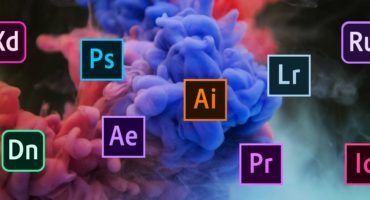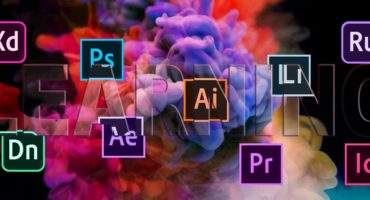RAW vs JPEG – Practical Use for Designers & Photographers
Last week Firgs opened up her Designer Roundtable discussion with the topic RAW vs JPEG and whether it matters to designers. I responded in the comments that designers could simply use the JPEG provided to them or take advantage of what RAW has to offer for more creative post-processing. She followed up with a question about practical things designers need to know about using RAW vs JPEG. With that here are my Top Five Things to know about RAW vs JPEG:
1. White Balance.
When using Adobe Camera RAW or Lightroom, you have the ability to change the image white balance without affecting image quality. In fact, the white balance settings will reflect the available features in camera, e.g., Daylight, Fluorescent, Tungsten, Flash, etc. You can also choose “As Shot” or let the program Auto white balance. When creating a custom white balance you can read & adjust the color temperature of the RAW file.
When using a JPEG file you can adjust white balance, but it’s not the same as changing the settings. Adobe Camera RAW & Lightroom only give you three choices–Auto, As Shot or Custom. When creating a custom white balance setting you make a +/- adjustment without seeing the color temperature.
2. Bit Depth.
As referenced in Brandon’s article JPEG is limited by being an 8-bit format. While the visual difference between 8-bit & 16-bit might be invisible to most people (I can’t see it), there’s definitely more headroom in the RAW format. If you’re only printing consumer sizes then you may not miss 16-bit, but REALLY large sizes–billboards–take advantage of the extra color data. As Brandon outlined so well, you will see the difference processing an 8-bit file repeatedly over time.
3. Noise.
The latest versions of Adobe Camera RAW & Lightroom include much improved Noise Reduction. Making these adjustments appear smoother and frankly look better when done to a RAW file. (Although you know YOU CAN process JPEG files with Adobe Camera RAW and Lightroom right?) UPDATE 08/09/2010 – Watch this video from Terry White to see how to use JPEGs in Camera RAW
4. Control.
Simply put RAW files are unprocessed. As I tell students in my digital photography classes, RAW is like developing film yourself in a darkroom, while JPEG is akin to picking up the final prints from WalMart. A RAW file let’s you decide the final settings for white balance, exposure, hue, saturation, luminance, just to name a few. A JPEG is already predisposed to settings which you can only manipulate.
5. Saving a JPEG is like recording to VHS cassette.
JPEG by its very nature adds compression when saving a file. This compression–regardless of quality setting–is destructive in nature. JPEG is a known “lossy” format which is why TIFF (lossless format) is generally preferred by print vendors. Every time you save a JPEG–making digital copies is different–you run the compression algorithm degrading the file.
Changes to RAW images are generally written out to metadata, therefore the format itself is non-destructive. Given that Adobe Camera RAW & Lightroom are designed to work with RAW images you can further take advantage of this ability.
Prior to Camera RAW, designers saved their master files as Photoshop PSD or TIFF. Why? Because JPEG is a destructive format.
But wait…
Is there ever an instance where creatives would prefer JPEG over RAW?
1. Speed.
For photographers who shoot action, JPEG is the faster format. Smaller files allow for more images to be buffered, RAW is simply too slow.
2. Hardware doesn’t support RAW.
I have met a number of event photographers who provide clients with print-on-demand or “instant printing” services while onsite. Many of these photographers opt to keep the hardware setup as small as possible, meaning they just bring a photo printer & forgo a laptop. While I know newer printers allow WiFi printing, it’s been my experience that printers with media slots only read JPEG files. If you want to print & go without using a laptop then you’d have to consider using JPEG in this instance. What about shooting RAW & JPEG in camera? Again, if you need the file immediately that’s an option. I’d rather you not waste card space and download the free app Instant JPEG from RAW.
3. Storage.
I think this is the weakest of the arguments I come across. Hard drive storage is becoming more cost effective for everyone. Also, as photographers we should be shooting for quality NOT quantity. Discipline in our work will mean less wasted storage space.
Notice the pro JPEG statements apply mainly to the photographers creating the initial image. Bringing this back to my original statement, IF a designer only needs a base image, small format, 8-bit for the web or print, then JPEG will suffice. However, the most creative license for post-processing will be had from a RAW file.



Thanks for the mention!
|B
{x=}
You’re very welcome. :^)
Learned some new differences, thanks!
And where would you place PNG format for processing inside Photoshop?
In between RAW and JPEG?
I would treat PNG as I do JPEG, mainly as a finished format. Adobe Fireworks uses a modified version of PNG that stores additional file info but for Photoshop I only output to PNG.
AJ this is great! Thanks for writing this. Is there any way I could convince you to expand on the portion that talks about White Balance in a RAW vs JPG through a video tutorial?
I’ll even say please! 😀
Done. Here’s your white balance video:
https://ajwood.com/tiptues0803
“Hard drive storage is becoming more cost effective for everyone.”
I find THIS the weakest argument for using RAW, personally. For someone who shoots limited amounts of photos per month, sure, but for someone like me who shoots about 50,000 a year, minimum, it is not the case. The last thing I need is a room full of hard drives…
Hi A.J. ,
I am new to lightroom. I shot all my photos in RAW and uploaded them, however I don’t know if they uploaded in RAW, it doesn’t seem like they have because I don’t have all the extra choices on my white balance tool bar. How do you know if it uploaded as jpeg or RAW? If I have already uploaded them in jpeg, how do I change them or do I just have to reupload them?
Thanks for your help!!
Amber,
I would look at a few things:
1. When importing your photos do you see the file extensions? JPEG would be “image1.jpg” whereas RAW would be “image1.cr2 or image1.nef” (RAW examples being Canon or Nikon).
2. Are you shooting RAW+JPEG in camera? It could be you shot both, but then only grabbed the JPEG images.
If you uploaded JPEG files those cannot be converted into RAW. You would need to upload the files again.
I love RAW. It allows me to save different exposures of an image and blend them together in Photoshop to get some really punchy results, especially in Black and White. Here’s how I do it-
Using Photoshop and Lightroom creatively with Exposure bracketing
http://heatherbuckley.co.uk/using-photoshop-with-exposure-bracketing/
great share, i had to learn about this in this article really help me
thanks
thank you.. really learned something today. ^^
Storage space is possibly the most compelling reason to avoid RAW shooting, even for less frequent shooters. For example, I shot about 20 photos today in RAW + JPEG and the RAW files took up about 480 MB. That’s an amazing amount of space for just a few photos, and for what benefit? It turned out that the RAW files provided nothing of significant value for what was being shot. RAW takes more space, takes longer to back up to another medium, is often shot with a complementary JPEG file anyway, and doesn’t necessarily benefit the photographer. Plus, while hard drive space is fairly cheap (two 3TB drives, one for storage and one to back up the other, costs around $200) the future is in super-fast solid-state drives, and those are far more expensive per gigabyte. RAW files aren’t as attractive if you’ve upgraded your laptop to a 240GB SSD and don’t want to lug around a bunch of external storage while in the field.